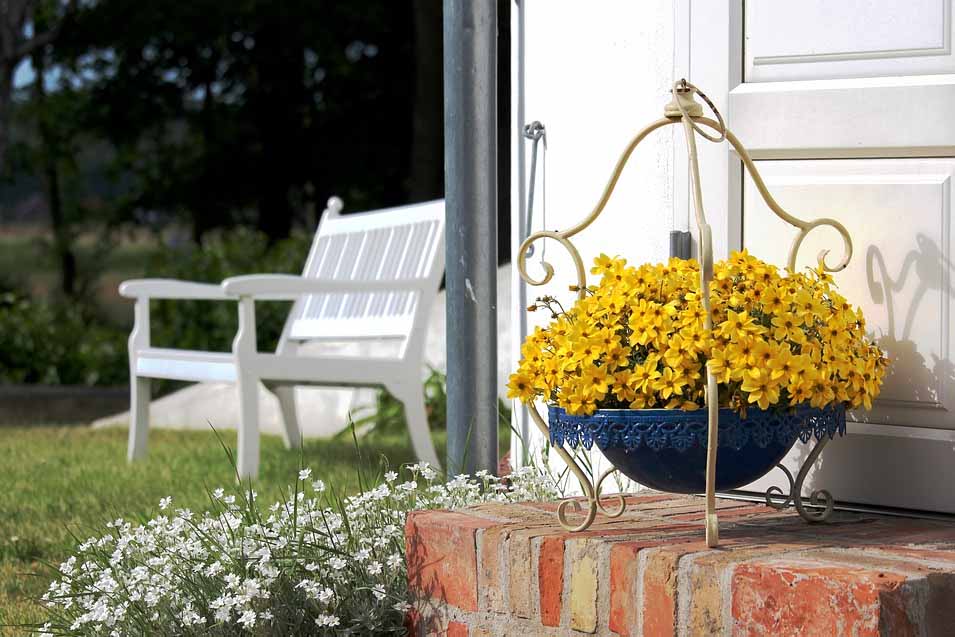
Are you sick of staring at your tired-looking front yard? Do you wish you could make it over but have no idea where to start? The truth is, rehabbing a front yard can be easily accomplished with little more than some dedicated spare time, some YouTube tutorials, and a well-thought-out plan. To help in this endeavor, we’ve compiled five ideas that should help anyone fix up their front yard in no time.
Those looking to makeover their front yard will want to come up with a good plan, cut out what isn’t working, repurpose what is working, add new life to the space, fix up foundational elements, and be sure to leave room for things to grow. We expand on each respective tip in detail below.
1. Come Up with a Plan
The first step that anyone looking to makeover their front yard should take is to come up with a comprehensive plan for their space. A good plan will help you ascertain what is working and what isn’t – along with helping you get a better idea of your yard’s growing conditions (if you’re completely lost as to where to start with your plan, this video from beloved British gardener Monty Don gives a good primer.) Not all yards are large, sprawling spaces that can oblige to your every landscaping wish, so it is important to analyze the space to properly plan how to use it best.
Take your time and map out the changes that you want made. Come up with a focal point (or two) and plan out the rest of your space to complement that. Even minor complimentary changes can make a world of change.
2. Cut Dead Weight
Over time, the natural life-cycle of a garden will lead to some plants doing better than others. If you have fauna in your garden that seems to be struggling with its current conditions, don’t hesitate to replace it. Be sure to remove the roots of the dead plant before replanting in its place. If you want to save a few greenbacks while growing your green thumb, compost your dead plant matter to feed the greenery you want to keep.
Dead (or dying) plants rob your soil of nutrients in an attempt to revive itself. In some cases, the plant could be a lost cause, so be sure to remove them if saving them isn’t an option. This will save your soil for thriving plants that provide environmental and aesthetic value.
3. Repurpose What You Already Have
In addition to getting rid of what you have that isn’t working, this can also be a good time to take stock of what is already present in your yard. Take advantage of plants that are already thriving. This can mean researching plants with similar needs to determine the resources of an area or undertaking tasks such as dividing perennials so that they can be spread around the space. You can even move plants to places where they may do better, both aesthetically and due to natural conditions.
Clippings are a great way to expand on what you already have without having to go shopping or spend additional money.
4. Add New Plantings
The key to successful shopping is always to make a list and stick to it – truly. Consider what you already have (in terms of plants and resources such as light and water) and what you’re lacking – such as texture, height, or color. Choose plants that fit your design and your climate before heading to the garden store, and write down the number you need, too.
Do your due diligence to make sure that what you are adding doesn’t have the potential to take over areas with existing plants, but also to make sure that your landscape conditions can support the plants needs.
5. Rehab or Replace Pathways
If you have a driveway or walkway that has cracked and degraded over time, it may be worth considering a replacement. Of course, grading a job site and pouring concrete typically is beyond the reach of most DIY homeowners. This is one reason why it pays to partner with a local concrete professional. One that understands the needs of your locality. After all, a concrete contractor in Peru, IN will have many different offerings, suited to different conditions when compared to an outfit located in Miami, FL. This isn’t just an aesthetic consideration, it’s an issue of safety. Properly maintaining your paved surfaces helps keep you safe in slippery conditions.
6. Leave Room to Grow
Lastly, when filling your front yard with design features and plants, it is important to remember that everything will take some time to grow into place. Don’t be disappointed if you see more blank space than you would like initially, as this is space that will soon be filled. Just make sure you follow these tips and plan properly. A well-designed garden isn’t necessarily at its most efficient if it is packed with plants anyway. Remember, any sustainable garden needs room to grow!
